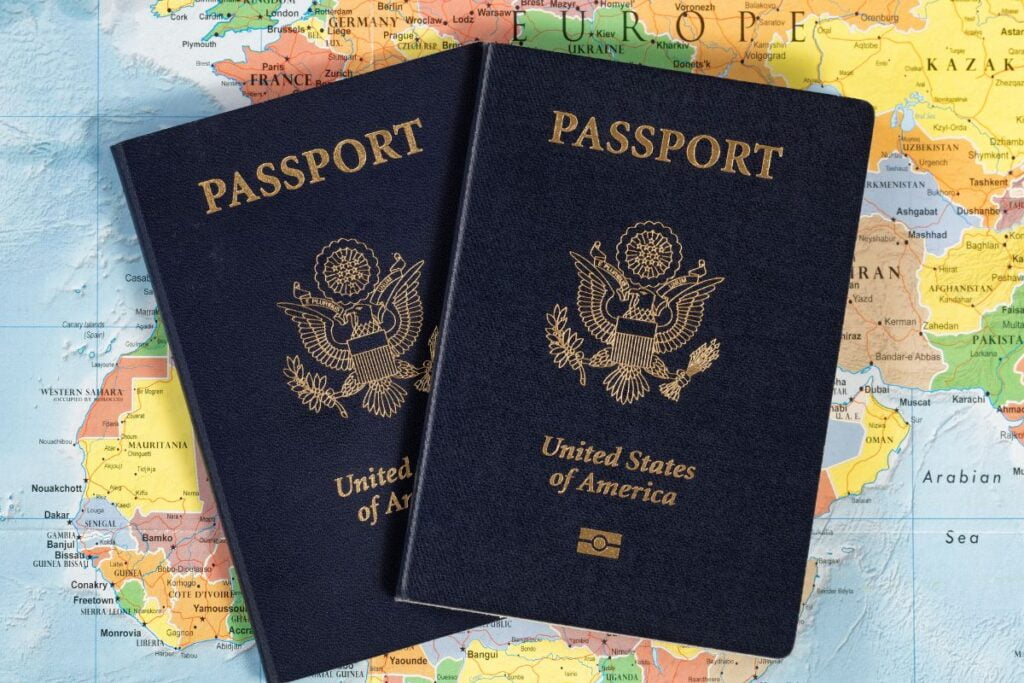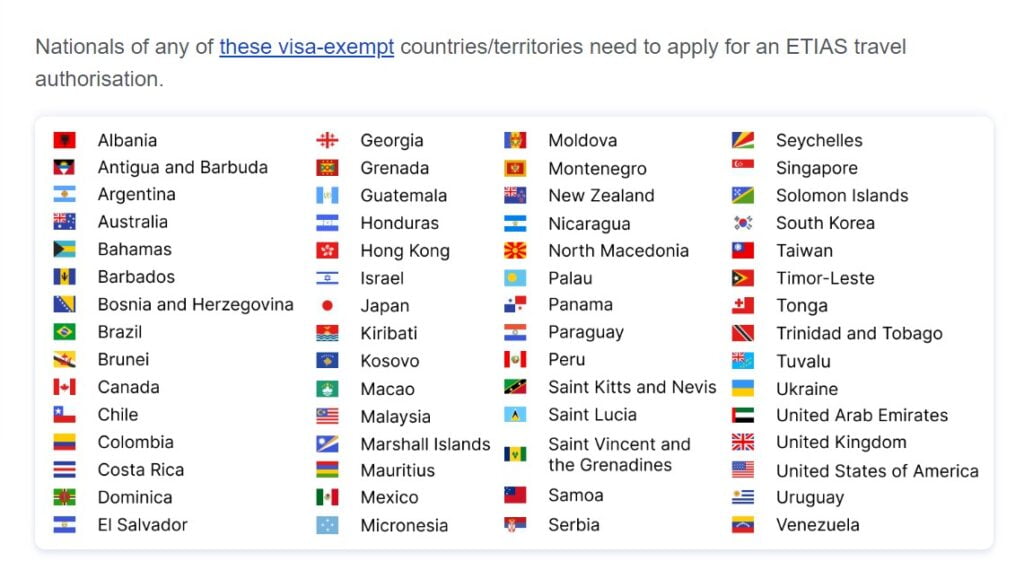What Travel Documents Do I Need For Europe?
If you plan to travel to Europe then make sure you have the correct and valid travel documents. Specific entry requirements depend on your nationality, but below I provided the basic info & main documents for traveling to Europe.
Passport: You’ll need a valid passport. For most countries in Europe, the only travel document for a US or Canadian citizen is a Passport. Your passport should be valid for at least 3 to 6 months beyond the intended stay.

ETIAS: From the year 2025, visitors from countries that do not require Schengen visas (United States, Canada, and Australia among others) will have to apply for an ETIAS (European Travel Information and Authorization System) permit for 30 European Countries.
These 30 European countries require ETIAS:
Austria • Belgium • Bulgaria • Croatia • Cyprus • Czech Republic • Denmark • Estonia • Finland • France • Germany • Greece • Hungary • Iceland • Italy • Latvia • Liechtenstein • Lithuania • Luxembourg • Malta • Netherlands • Norway • Poland • Portugal • Romania • Slovakia • Slovenia • Spain • Sweden • Switzerland
This is an easy online process and costs around €7 and is valid for 3 years or up to the validity of the passport
Once you apply for ETIAS then you receive a confirmation email with a unique ETIAS application number and keep this number for future use or reference.

Caution: When applying for ETIAS be cautious of non-official websites that charge extra fees for collecting personal data illegally. So make sure to use the official ETIAS website.
Visa: For those who are not residents of visa-free countries, a Schengen visa for a stay of a maximum of 90 days is required. For a longer stay depending on the destination, may need to apply for a national visa. Keep in mind in this case there is no need for ETIAS.
The Entry/Exit System (EES) is intended to keep track of the non-EU nationals who come to Europe for short-term visits. It is planned to begin in the first half of 2025 and will affect 30 countries in Europe, including Schengen countries.
Manual passport stamping is the existing system that the EES will substitute. That will automatically track the entry and exit data of non-EU travelers. Such data will include biographical data, identification information, and travel documents, as well as fingerprints and facial images. The main objectives of this system are to improve the efficiency of border control, prevent people from staying in the country beyond their visas, and improve security.
This system applies only to short-term visits, generally up to 90 days within a 180-day, across the 29 participating European countries.
The EES will work alongside the ETIAS European Travel Information and Authorization System, which visa-exempt countries’ travelers must complete before entering the above-mentioned countries. Altogether, these systems are claimed to be in line with the aims of enhancing the management and security of the borders in the framework of the EU.
Many European countries, especially those within the Schengen Area, require or strongly recommend that visitors have travel insurance that covers medical emergencies. This is often a mandatory requirement for obtaining a Schengen visa.
Some countries may also require vaccination certificates such as COVID-19 certificates, especially for long-term stays.
If you plan to drive in Europe, an IDP (international driving permit) is often required in addition to your national driver’s license. So make sure to get this license before departure. You can get this license through the AAA, local DVM, or FIA.
If applicable, you should apply for student or youth cards that help you get discounts on accommodations, transport, etc.
Please consult with your embassy to get more unique details about your travel requirements to avoid any problems.
This information is collected from the official website of the European Union.
Also Read: Polio Vaccination for International Travel From Pakistan in 2024






